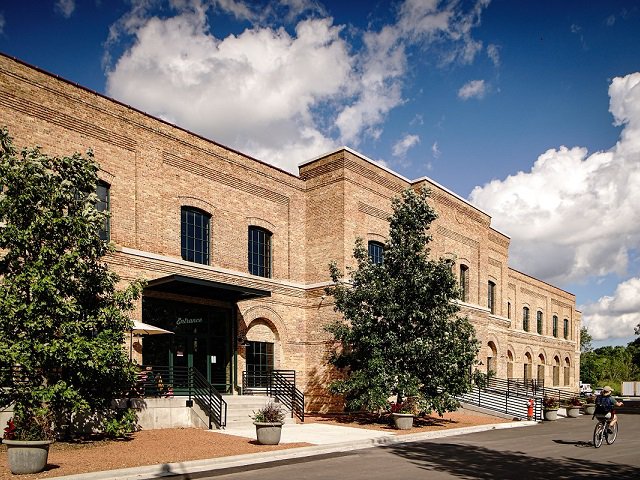Vulnerable Bodies
Garver Feed Mill 3241 Garver Green, Madison, Wisconsin 53704

courtesy James Watrous Gallery
A glimpse at the "Vulnerable Bodies" exhibit space.
Certainly the pandemic has proven that necessity is the mother of invention. With the Overture Center closed, the small James Watrous Gallery on the third floor is popping up with exhibits in more accessible locations. Its Vulnerable Bodies is located at Garver Feed Mill, where soaring ceilings and open spaces make viewing in person (with mask and social distancing) possible. The exhibit's theme is interpreted in varied ways in work ranging from small sculpture to large installations. The exhibit space is open Thursdays through Sundays through July 24, or by appointment: jclowes@wisconsinacademy.org. A closing reception will take place at 7 p.m. on July 23.
media release: As Overture Center remains closed, the James Watrous Gallery is hosting Vulnerable Bodies, a pop-up exhibition at Garver Feed Mill on the east side of Madison (map here). Gallery hours are Thursday 12-7, Friday and Saturday 12-8, and Sunday 12-4, from April 15 until July 24. Please note that the gallery will be closed for private events on select dates. The Garver Gallery space is well ventilated, masks are required, and we will observe occupancy limits to support social distancing. To be sure the gallery is open, or to make an appointment for private viewing, contact James Watrous Gallery director, Jody Clowes: jclowes@wisconsinacademy.org.
Artists' Reception: Join the James Watrous Gallery for a closing reception to celebrate the last Friday evening of our Vulnerable Bodies pop-up exhibit at Garver Gallery, with artists Demitra Copoulos, Erica Hess, J Myszka Lewis, Yevgeniya Kaganovich, Masako Onodera, and Valaria Tatera, along with curator Jody Clowes. We're offering light refreshment, good conversation, and a last chance to enjoy these provocative works of art. Free and open to the public. 7 p.m.
Vulnerable Bodies features six artists—Erica Hess, Masako Onodera, Yevgeniya Kaganovich, Demitra Copoulos, J. Myszka Lewis, and Valaria Tatera—whose work speaks to the paradox of fragility and resilience. Our bodies are a landscape of both internal and external tensions; they map the fissures of this cultural moment. Fear of a deadly virus is compounded by the palpable dangers of economic uncertainty, political division, and the emboldened expression of racism, xenophobia, transphobia and other forms of othering. As the cracks in our system are laid bare, we feel them in our bones.
In work ranging from small sculpture to ambitious installations, these artists address the body obliquely, working with metaphor and proxies from everyday life. Hess and Onodera make sculpture and objects that examine aging, disability, and mortality through surrogates like dishware, balloons, and blankets. Copoulos' Self Portrait in 11 Parts documents the organs and bones of the human body, isolated in a way that emphasizes their fragility. Kaganovich's mouth pieces and hand pieces remind us of the fraught intimacies of touch and shared breath. Rendered with cross-stitch and flocking, Lewis's Bricks and Access Covers toy with our assumptions about strength and weakness. And Tatera, working in ribbon and ceramic, challenges us to respond to the twin crises of Indigenous suicide and missing and murdered Indigenous women, girls, and two-spirit people.



 Google
Google Yahoo
Yahoo Outlook
Outlook ical
ical